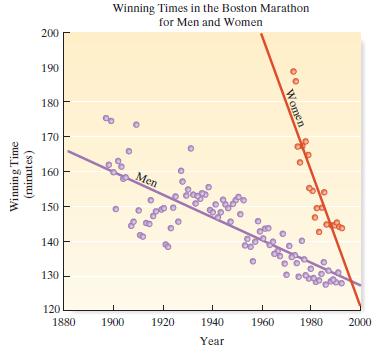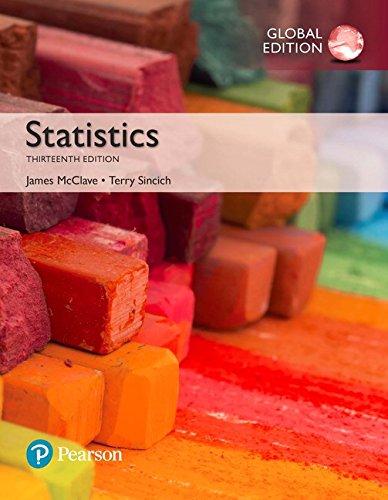Winning marathon times. In Chance (Winter 2000), statistician Howard Wainer and two students compared mens and womens
Question:
Winning marathon times. In Chance (Winter 2000), statistician Howard Wainer and two students compared men’s and women’s winning times in the Boston LO9
Marathon. One of the graphs used to illustrate gender differences is reproduced below. The scatterplot graphs the winning times (in minutes) against the year in which the race was run. Men’s times are represented by purple dots and women’s times by red dots.

a. Consider only the winning times for men. Is there evidence of a linear trend? If so, propose a straight-line model for predicting winning time (y) based on year (x). Would you expect the slope of this line to be positive or negative?
b. Repeat part b for women’s times.
c. Which slope, the men’s or the women’s, will be greater in absolute value?
d. Would you recommend using the straight-line models to predict the winning time in the 2020 Boston Marathon? Why or why not?
e. Which model, the men’s or the women’s, is likely to have the smallest estimate of s?
Step by Step Answer:







